Hello gentle readers, and welcome to the SwitchArcade Round-Up for July 22nd, 2024. We’re blasting out of the gates this week with a couple of noteworthy new releases, a bunch of reviews, and the usual lists of new and outgoing sales. Our pal Mikhail has his thoughts on Bo: Path of the Teal Lotus, while I’ve got reviews of Nintendo World Championships: NES Edition, Darkest Dungeon II, Satryn DX, and Over Horizon X Steel Empire. This is a very big one, so let’s get right to the action!
Reviews & Mini-Views
Nintendo World Championships: NES Edition ($29.99)
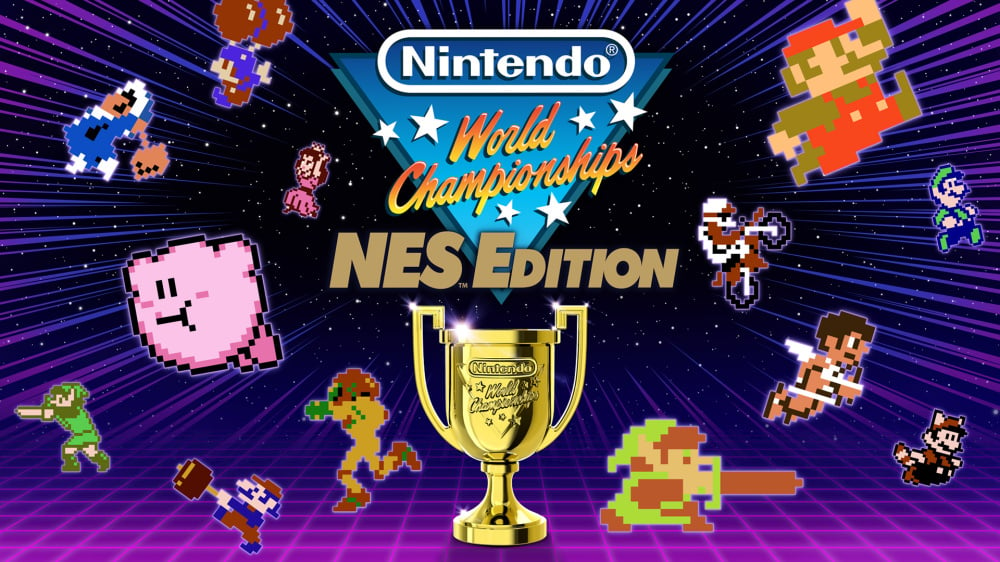
Nintendo World Championships is an example of how you can repackage a very familiar gameplay core and make it feel fresh by presenting it in a different way. On a couple of levels, I suppose. First of all, none of the included thirteen NES titles is outside of Nintendo’s norm for reissues. Even Super Mario Bros.: The Lost Levels (which is to say, Super Mario Bros. 2 Japan) is well-trodden ground by this point for 8-bit Nintendo enthusiasts. You can go play all of these games in full on the Nintendo Switch Online NES app, in fact.
On a second level, this release shares a lot of its concept with NES Remix, the clever Wii U/Nintendo 3DS set of titles. All the way down to the same developer, indieszero. Indeed, some of the challenges in this game are pulled right from NES Remix. You’re playing a collection of NES games, given tasks that will take you anywhere from seconds to minutes to complete. The game will time your effort, and your aim is to do things as quickly as possible. As you play, you’ll unlock more challenges that test your skills even further. Every single game featured here could be found in one or more of the NES Remix releases.
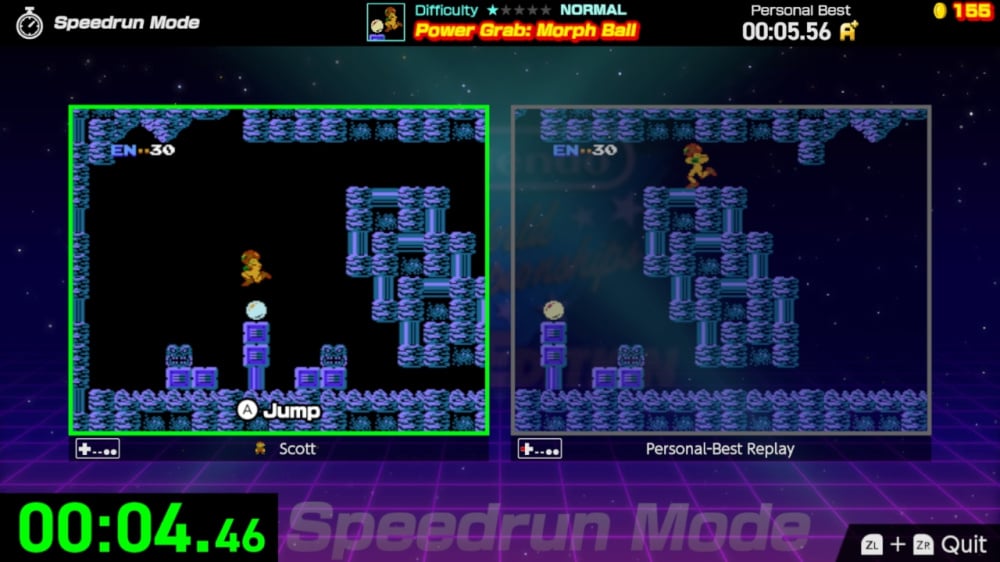
A lot in common, and given that we’ve got fewer games to play in Nintendo World Championships and don’t have the silly mash-ups and swerves that NES Remix had (such as Link tackling the classic first stage of Donkey Kong), it’s easy to see this as a disappointingly cut-down take on those games. Certainly, that was my initial feeling. But it didn’t take long for me to see the appeal in this new approach to these vintage games. It trades the whimsical celebration of the NES for the sort of 1980s synth style you would expect from the evocation of the Nintendo World Championships name. And it leans hard on its competitive aspects, both the competition against oneself and others. It works really well, or at least it did for me.
The first thing you do is set up your profile. You can pick from an initially limited set of icons, choose a title from an amusing selection, and then set your favorite NES game from a list of… every officially licensed release. Nifty. Next, you pick between solo and local multiplayer play. The latter allows up to eight people to tackle packages of challenges to see who’s got the skills to pay the bills. It is really, really fun. Even just a few players competing against each other can provide an exciting couch multiplayer experience. If you do regular gaming nights, this is a great addition to the rotation. Doubly so if the participants are old enough to have nostalgia for these games. You can’t play this mode online, which is a bit of a shame but given the literal split-second timing involved I suppose I get it.
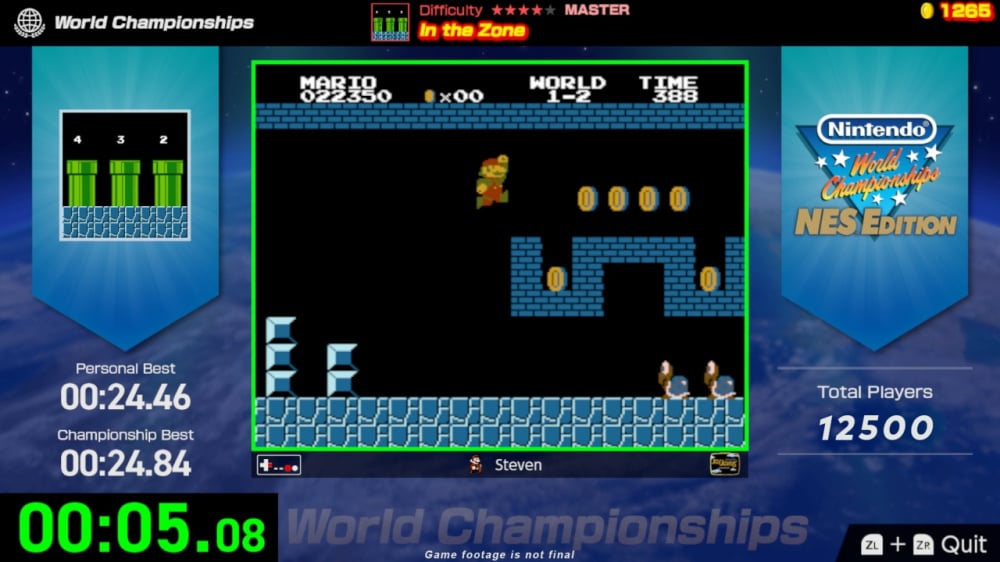
Over to that solo mode now, because that’s where I’ve spent the bulk of my hours with the game so far. You start with three modes to play, each offering its own experience built around the same set of one hundred and fifty bite-sized challenges. Speedrun Mode sees you taking on each challenge one at a time, with a couple of challenges unlocked for each title at the start and more available by spending coins that you earn by playing. In this mode, you’re going as fast as you can to try to earn higher ranks, which will unlock collectible pins and give you more coins. You can see your best play happening in a window to the right, but if you don’t want to see that and would prefer more screen real estate for yourself, you can turn that off. Your time for each challenge is measured down to the hundredths of seconds, and it always feels like you can shave a little more off.
The number of challenges per title varies, with more popular games generally getting more. The difficulty of those challenges ramps up as you go, with each game culminating in a Legend Challenge. These are much beefier and more demanding than the previous ones, tasking you with things like playing through the entirety of Super Mario Bros. using warps or clearing the entire first palace of Zelda II: The Adventure of Link. A cool thing about these Legend Challenges is that each one has a Classified Information option you can choose to see a Nintendo Power-style guide for helping you do your best. I liked that a lot. Once you’ve unlocked and completed every challenge regardless of your results, the credits will roll. All done! I mean, you can go back and try to get all S-Ranks, maybe unlock every pin and icon, but what else is there?
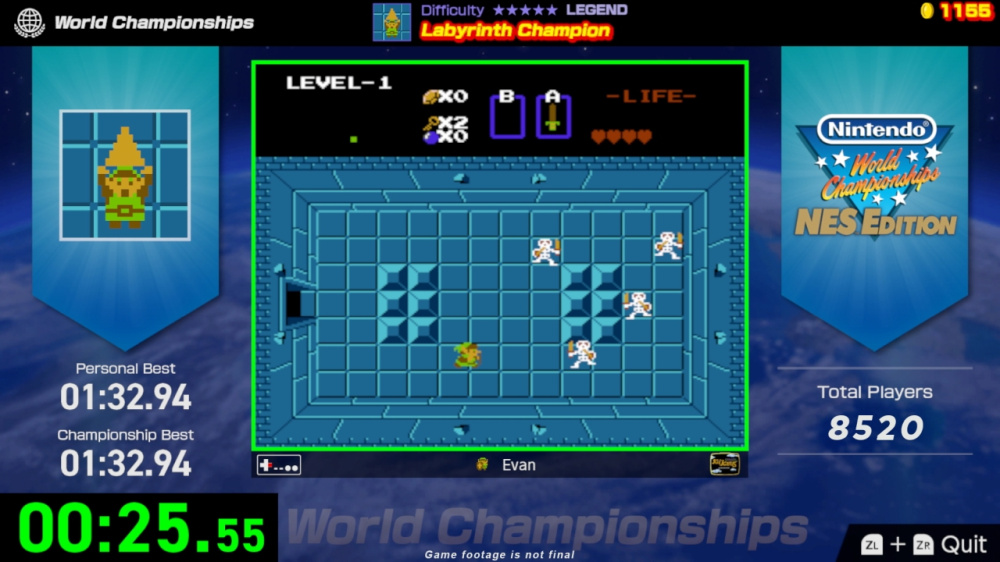
Well, the next mode might keep you playing for a while longer. World Championships offers up a weekly rotation of five challenges selected from the total pool, and whether you’ve unlocked them in Speedrun Mode or not, you can play them during that time. Your goal is to try to get the best time on each of them, and you can try as many times as you like within that week. You can’t carry over your performance from the Speedrun Mode, so you better hope your skills weren’t a fluke. At the end of the week, you’re able to see how you ranked on the leaderboards. There are two leaderboards, one for the whole world and the other that stacks you up against other users with the same birth year. You’re also able to view replays from recent champions. Maybe one will be you!
At first, this odd approach to leaderboards had me confused. Why not instant leaderboards for all the challenges? At least some leaderboards with my friends? Why not have an active leaderboard during each World Championships event? But having spent some time with it, I can somewhat see the logic in it. Or at least the appeal in it, if nothing else. Ultimately in any contest like this where players are setting scores or times to compare with each other, the real enemy is yourself. While seeing the scores of others can certainly motivate a person, at the end of it all what you really need to do is beat your best you, again and again.
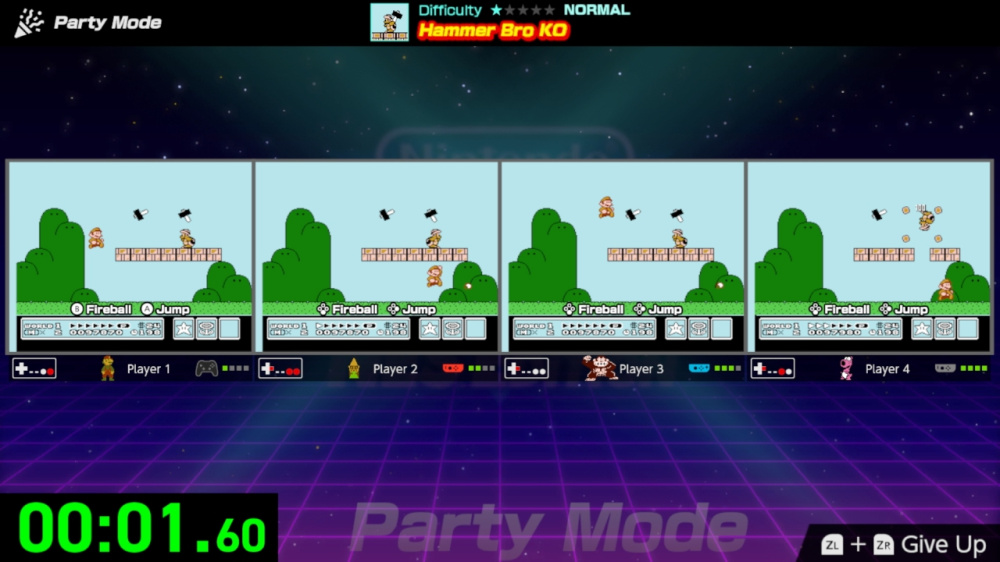
That’s really driven home in the World Championships mode. With no idea of what the best times look like until each event is over, all you can really do is keep trying to improve. Slice off those hundredths or tenths of seconds. You’re competing against yourself in order to compete against others, as the only benchmarks you have to work with are the ones you’ve set. And so you keep going back again and again, pushing a little further. At the end of it you’ll see where you fall in the pack, and consequently if your efforts were enough.
If you want something more closely resembling direct competition and don’t have anyone nearby handy for the Party Mode, there’s the Survival Mode. In this mode you’ll compete against ghosts of other players in three challenges. The specific challenges change every week, and the order you’ll play them in is randomized each time you try. The first round has eight players and the best four will make the cut, the second cuts two more, and the third challenge is one on one. You get two different divisions in this mode, the Silver Division and the Gold Division. The challenges can be different between the two, and the Gold Division is much more difficult.
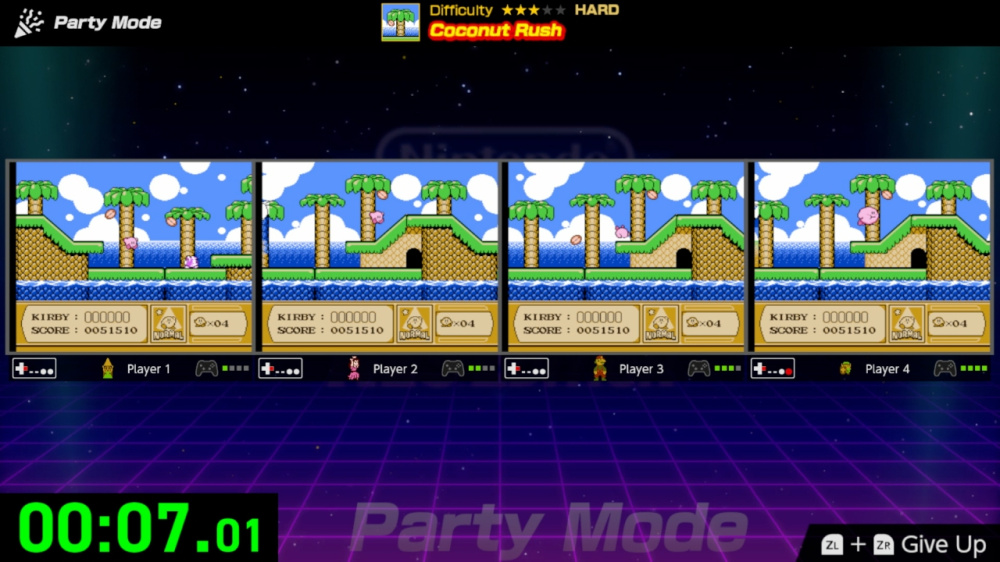
While these aren’t live opponents, functionally this isn’t much different from how an online mode would play out. You even get to see everyone’s tag, icon, and favorite game at the start. It’s fun to see what game each person picks. Regardless of what mode you’re playing, you’re earning coins. As long as you’re playing everything a bit, unlocking all of the challenges doesn’t take much in the way of grinding. Unlocking all the player icons is a bigger job, but it’s good to have something to chew on. There’s a little bit more to the game, but I’ll leave that as the pleasant small surprise it was for me.
Anyway, I think Nintendo and indieszero made a good effort here to present well-worn mechanics in a fresh way. I have felt considerably more compelled to keep playing and improve my times in Nintendo World Championships than I did with NES Remix. I suspect I will keep participating in the weekly challenges for the foreseeable future. Part of me hopes that Nintendo will see fit to add more games and challenges to this at some point, but I’m content enough with what’s already here. You absolutely have to be into the idea of score-chasing to get much of anything out of Nintendo World Championships: NES Edition, but if you are then I think you’ll have a good time.
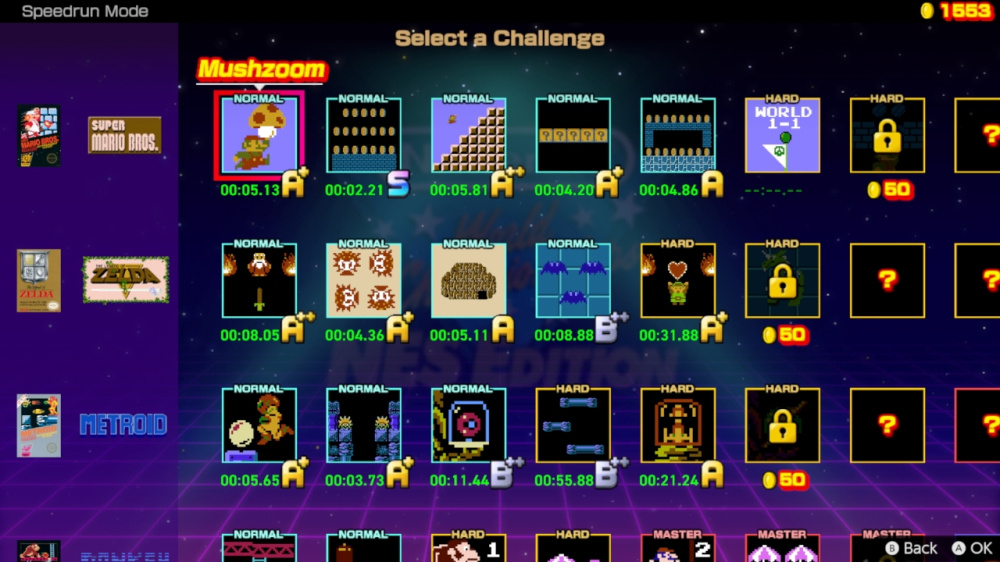
I’ll admit that I came into Nintendo World Championships: NES Edition a bit cynical, but it really did win me over in the end. The game’s presentation and modes are very well-built towards the end of funneling the player back into trying to better their best times, and it can even help improve your skills at the included games. I wish there was a little bit more meat on the bone, but the live modes are going to keep me coming back to this game for a while. Those without any interest in time-attacking won’t have their minds changed, but otherwise I would call this release a champ.
SwitchArcade Score: 4.5/5
Darkest Dungeon II ($39.99)
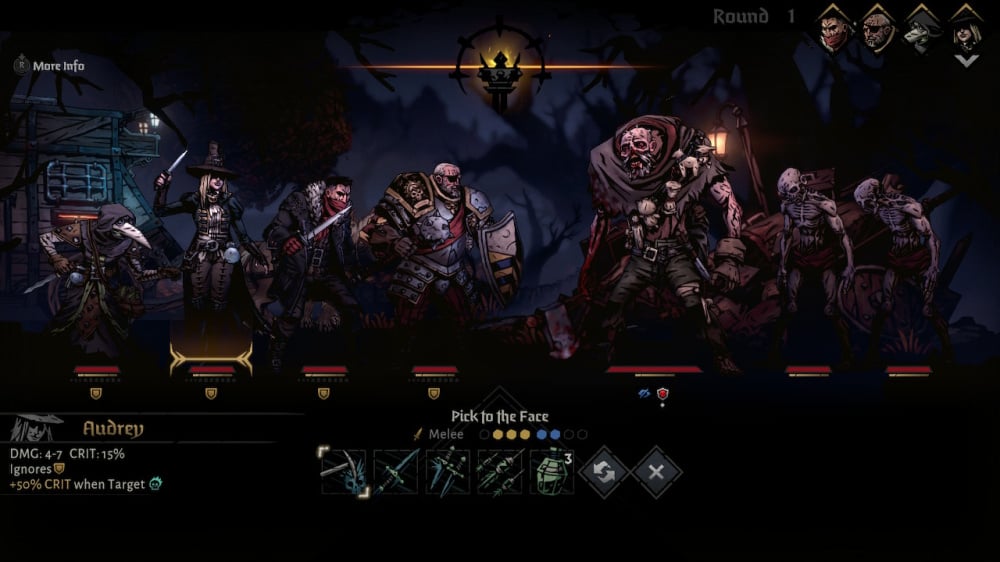
I think to even have the slightest hope of embracing Darkest Dungeon II, you have to set aside the idea of it following up on the first game in any significant way beyond its aesthetics and essential combat mechanics. If you can’t do that, you’re probably going to really dislike this game because it is structurally so different from the first. I think overall it is a worse game, but it’s so distinct from its predecessor in so many ways that it’s hard to directly compare them. Darkest Dungeon II leans heavily into the roguelite style, and it carries with it the typical strengths and weaknesses of that kind of game.
To put it simply, the way the meta-progression is set up in this game means you’re going to have to spend a lot of time grinding out runs that are doomed to fail before you even have the smallest chance of making a successful shot. Indeed, there are times where you’re going to have to make choices that will hurt your current run for the greater long-term good. But you will make progress, slowly but (differently from the first game) surely. Even a near-total failure of a run will contribute a bit to your overall success. On the other hand, you don’t have a base that you’ll be building up over time. You have a wagon, and it doesn’t work the same way at all. Also, you’ll have to drive the wagon as you move from place to place. It’s weird and not really very fun.

Taking Darkest Dungeon II for what it is, you get a pretty decent, densely packed, highly stylish roguelite adventure. That same heavily-inked, bleak art, now rendered in 3D for some extra-cool angles during battles. The grumbly-voiced narrator, nattering on in overly-dramatic prose as you make your way through the cursed lands. The turn-based combat is as rich as ever, with tons of variables from the different character classes and abilities, the relationships between party members, and the positioning of both your team and the enemies. Indeed there is so much going on here, much of it almost fully random, that it can be a bit overwhelming to try to digest it all. You’ll have plenty of time to do so, as actually getting into fighting shape for a winning run is a task that will probably take you dozens of hours.

Mikhail has also been playing Darkest Dungeon II on Switch and PS5 following his original playthrough on Steam Deck. He wanted to highlight how the team did a very good job making use of the platform-specific features. On PS5, Darkest Dungeon II has DualSense haptics and audio effects in addition to PS5 Activity Card support and super fast loading. On Switch, the load times are long, but the developers did a good job with HD Rumble and adding touchscreen support which is always good to have.

In terms of visual differences, the image quality difference is noticeable immediately, but the bigger differentiator is performance. The PS5 version targets 60fps and basically feels much smoother than Switch across the board. If you want to play Darkest Dungeon II on the go, grab it on Switch or Steam Deck, but for playing on your TV, the PS5 version is a lot nicer. It is good to see a demanding game like Darkest Dungeon II (based on how it was on PC) finally arrive on consoles with good conversions for the lowest and highest spec consoles.
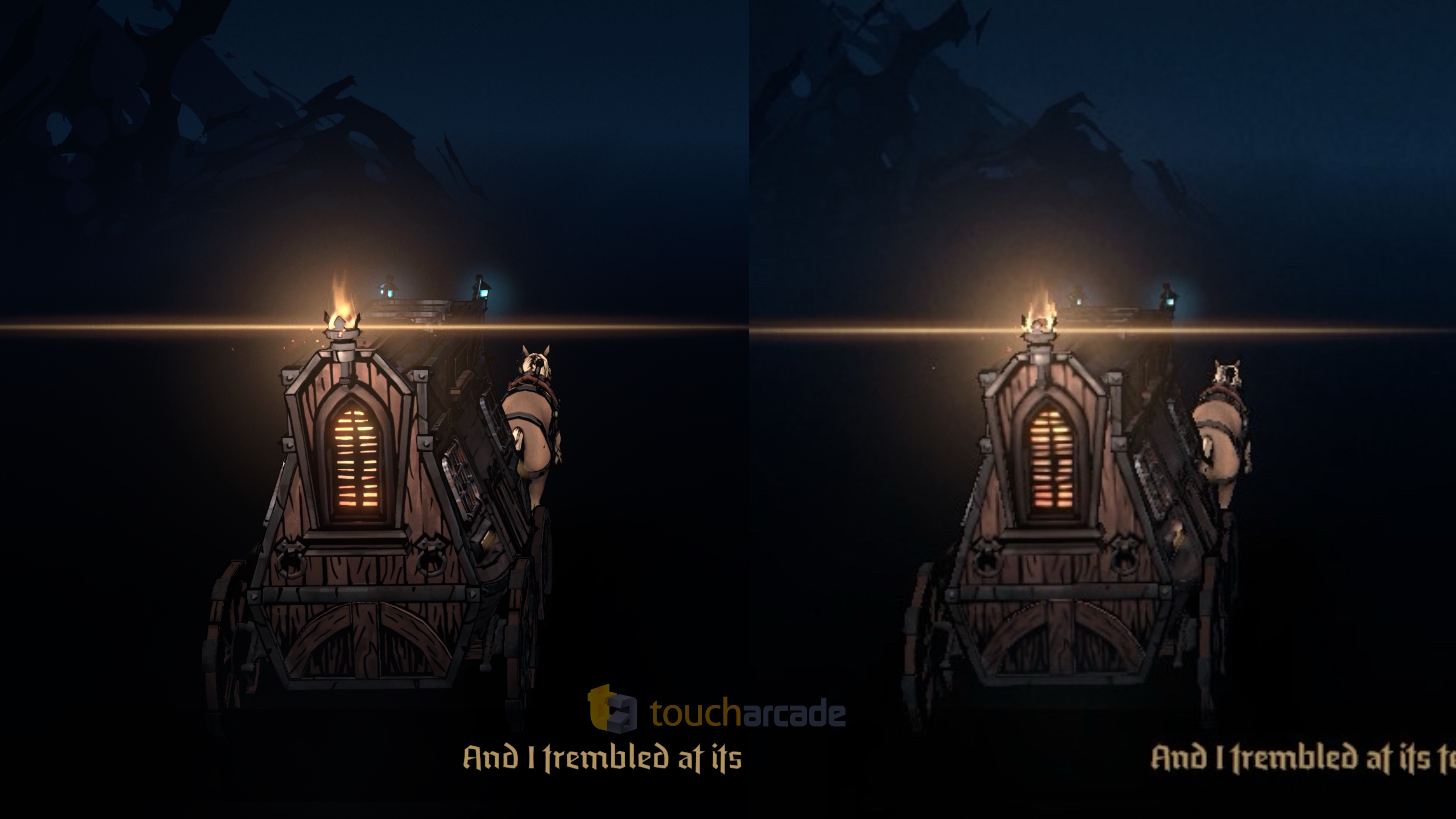
Once I accepted the fact that Darkest Dungeon II isn’t interested in building on the original game’s structure but rather in doing its own thing, I was able to settle in and enjoy the charms of this moody, chunky roguelite. There’s a huge wall in the early part of the game that you’re going to have to grind your way over, but I don’t think that’s particularly unusual for this kind of thing. Its merits are many, from its distinctive style to its combination of traditional story-telling bits and the magic of emergent, personalized stories. Roguelite fans will want to check it out, even if Darkest Dungeon fans might feel like pushing away from the table and going back to the original.
SwitchArcade Score: 4/5
Over Horizon X Steel Empire ($14.99)

As a shoot ’em up fan who is really interested in the whole score attack lifestyle, I sometimes have to remind myself that there is more to the genre than elements that feed into that approach. The average player almost certainly doesn’t care about that aspect, and while I don’t think that’s a good reason to not think about it at all, it’s worth considering when it comes to evaluating games in the genre. It’s particularly the case when looking back at games from the era before the genre started to hyper-focus on the hardcore audience. And that’s more or less what we have in Over Horizon X Steel Empire, a collection consisting of Over Horizon for the NES, Steel Empire for the Mega Drive/Genesis, and Steel Empire for the Game Boy Advance. All Hot-B titles, and while they’ve never been considered the cream of the crop, they have their fans.
The three games are served up in the now-familiar Ratalaika “brown paper bag” wrapper, with the usual assortment of options and features like cheats and a rewind function. No box or manual scans, no art, nothing like that. You do get the Japanese versions of the Steel Empire games as an extra, but not Over Horizon. I’ve banged on my drum before about how much better reissues like these can be with even a bit of context to inform why modern players should care, but I’m well past expecting that sort of thing from Ratalaika and ININ releases. It’s really too bad in this case, because these are very distinctive games in some ways and even a short introduction, or better still an interview with some of the developers, would be a lot of fun.
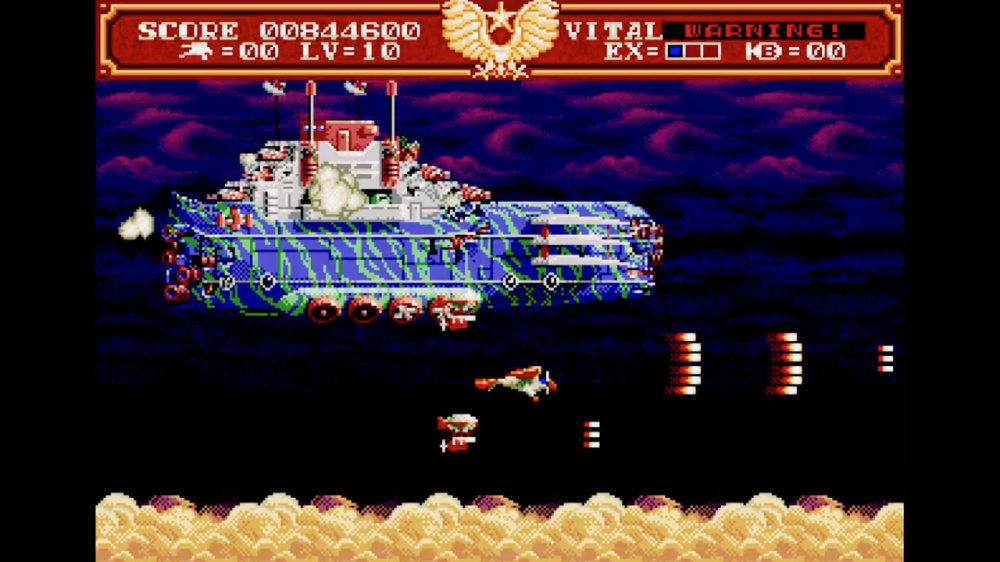
As to the games themselves, they’re solid horizontal shooters. The best of the bunch is Steel Empire MD/Genesis, the original version of the game that doesn’t see rereleases nearly as often as it should. You can choose between two different vehicles, a plane and a zeppelin, and need to battle your way through enemy forces in a cool steampunk world. The Game Boy Advance remake plays quite differently in many ways, but since it has served as the basis for all of the subsequent remakes it might feel more familiar in most ways beyond the tight screen real estate. As for Over Horizon, it’s mainly known for its extreme scarcity due to its very limited release, but it’s a technically impressive shooter when considering the NES’s limitations. Not the most exciting game, but not bad either.
If you’re into the idea of some slightly more approachable shoot ’em ups from the past, you might want to look into Over Horizon X Steel Empire. While it’s really just two distinct games, the two versions of Steel Empire differ from each other enough that I think you’re getting a decent value here. I really wish ININ and Ratalaika would do more to make these releases feel like they aren’t just dropping off the assembly line into a decent emulation wrapper, but if you’re only here for the games you’ll be well-served with this set.
SwitchArcade Score: 3.5/5
Satryn DX ($6.99)

Whatever the reason for the absence of WB Games’ classic arcade library on the Switch and other modern platforms, it is deeply unfortunate that so many key titles from the history of arcade gaming have been sitting on the bench for such a long time. Fortunately, indie game developers have been filling the gaps here and there with their own spins on some of these games. We’ve seen variants on Robotron 2084 before, and if one was only a little cheeky they could suggest the entire twin-stick shooter genre is just that. Well, here’s one more, and it’s a pretty solid take on it. Satryn DX evokes the funky colors and overall mood of Robotron 2084 while adding a few extra touches to distinguish itself.
Those range from the presentation, which goes a bit farther into the realm of the trippy, to gameplay elements like power-ups and a more varied cast of enemies. It keeps detailed stats on more things than you might expect, and it uses a QR Code system to allow for online leaderboards. There’s also a little encyclopedia you’ll fill out as you play, containing amusing little entries for all the enemies, traps, and power-ups you’ll encounter. Otherwise, this plays a nice game of Robotron-style action. You have your people to save, your enemies to blast, and your hazards to avoid. The controls are responsive, which is a must for this kind of thing, and the score multiplier adds an extra bit of spice to the recipe. Not the most complicated of games, but a rewarding one to play and try to get better at.
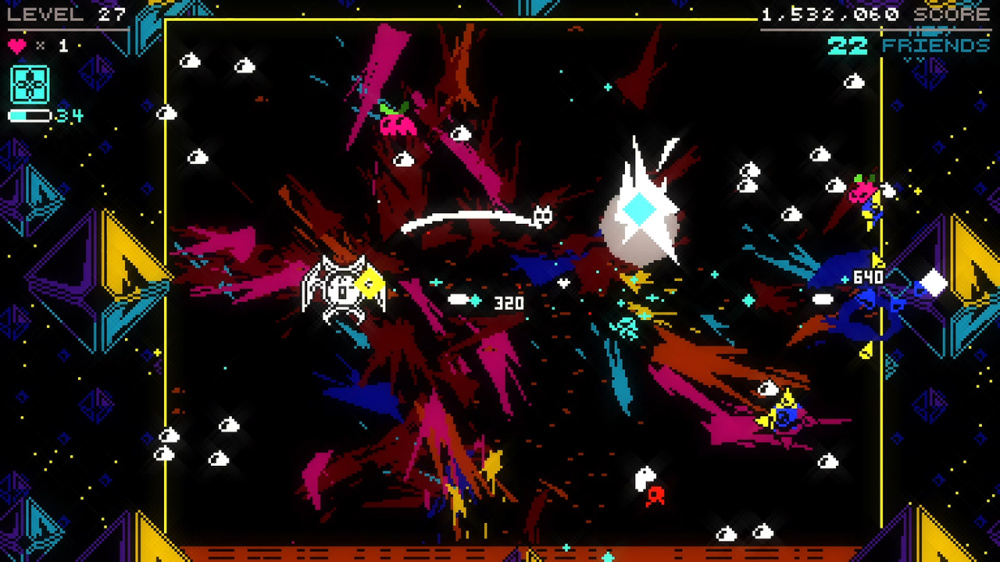
Satryn DX should appeal to fans of Robotron 2084 and games like it with its no-nonsense action and strong retro-style presentation. We’re certainly not hurting for twin-stick shooters on the Switch at this point, but sometimes you want something that cuts right to the heart of the genre and sets aside all the RPG elements, exploration, and what-not. If you’re craving that distilled enjoyment, give Satyrn DX a look. It’s a good one.
SwitchArcade Score: 4/5
Bo: Path of the Teal Lotus ($19.99)
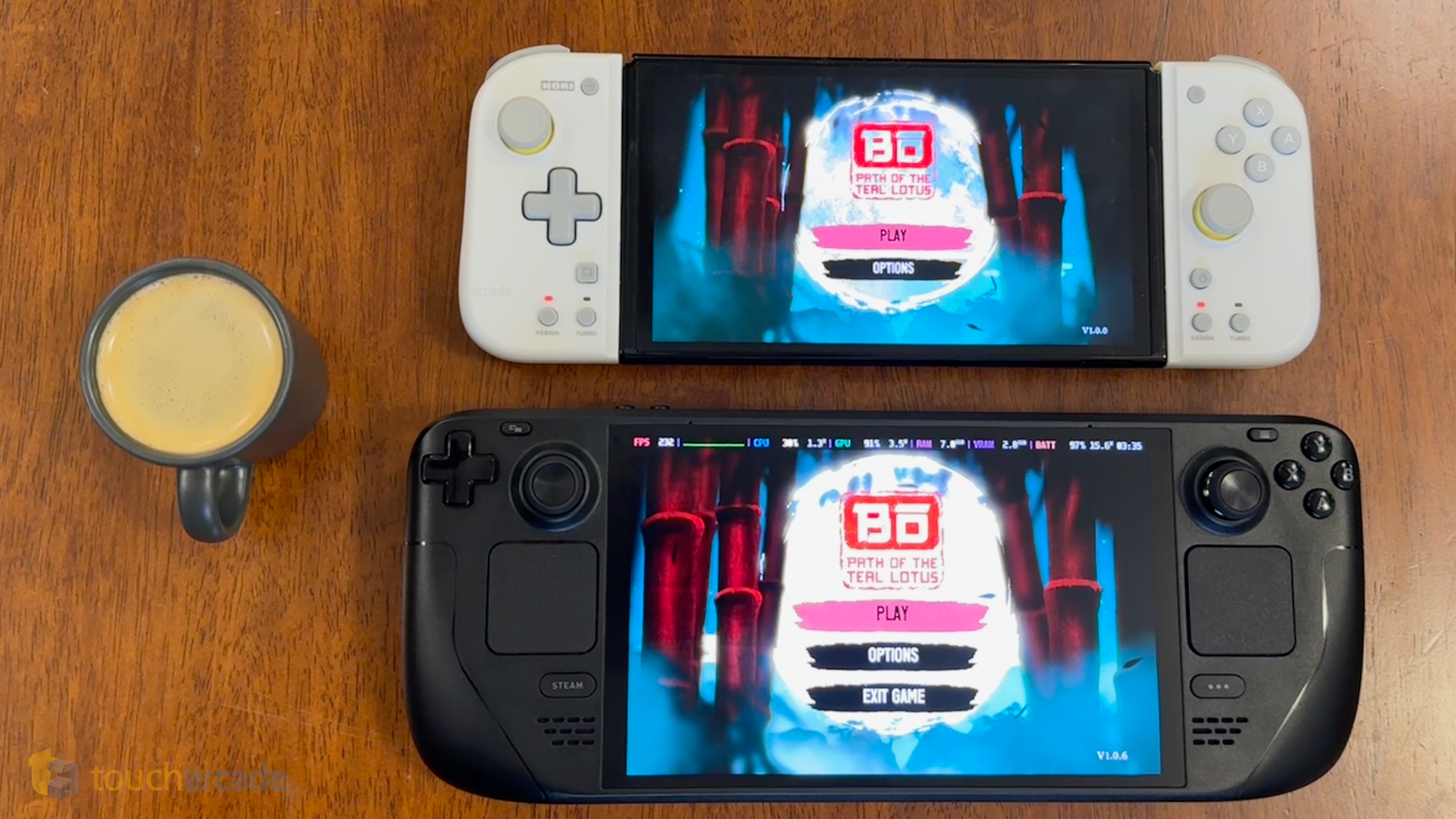
Ever since Bo: Path of the Teal Lotus from Squid Shock Studios and Humble Games was revealed, I was in love with its visuals and the gameplay looked very interesting. I didn’t bother watching much of the games showing since its reveal, and finally played it on Steam Deck pre-release before restarting it on Nintendo Switch from launch day for this review. That should tell you a lot already, but I basically really enjoyed Bo: Path of the Teal Lotus despite a few issues, but the Switch version is a bit rough around the edges.
Bo: Path of the Teal Lotus is a 2.5D action platformer Metroidvania with a Japanese folklore aesthetic that borrows from a few games in the genre I like a lot including Ori and Hollow Knight. What sets Bo: Path of the Teal Lotus apart is the traversal options that slowly unlock as you progress through the game.

Initially, the controls might seem a bit too complex with how you use the jump and attack together to move higher, but it took me a few minutes before I was pulling off whatever the game needed, and I adored the first boss fight that felt like a test of the basics of movement before you unlock your next skill. Speaking of bosses, I ran into some difficulty spikes across the game, but nothing too bad in the 10 hours I put into it across Switch and Steam Deck.
On Steam Deck, Bo: Path of the Teal Lotus is Steam Deck Verified, but it lacks Steam Cloud support. This is annoying as I wanted to also play it on my other Steam Deck. I hope it gets added soon. The game itself runs flawlessly though and is a stunner on the Steam Deck OLED screen.
On Nintendo Switch, Bo: Path of the Teal Lotus has some frame pacing issues that are regular in specific areas, but the performance is a lot better than I expected elsewhere. I expected Bo: Path of the Teal Lotus to be capped at 30fps on Switch, but it thankfully isn’t, and feels great to play in handheld mode. I did struggle with Joy-Cons though, and ended up using my Hori Split Pad Compact when playing in handheld mode. Bo: Path of the Teal Lotus also has very good HD Rumble.
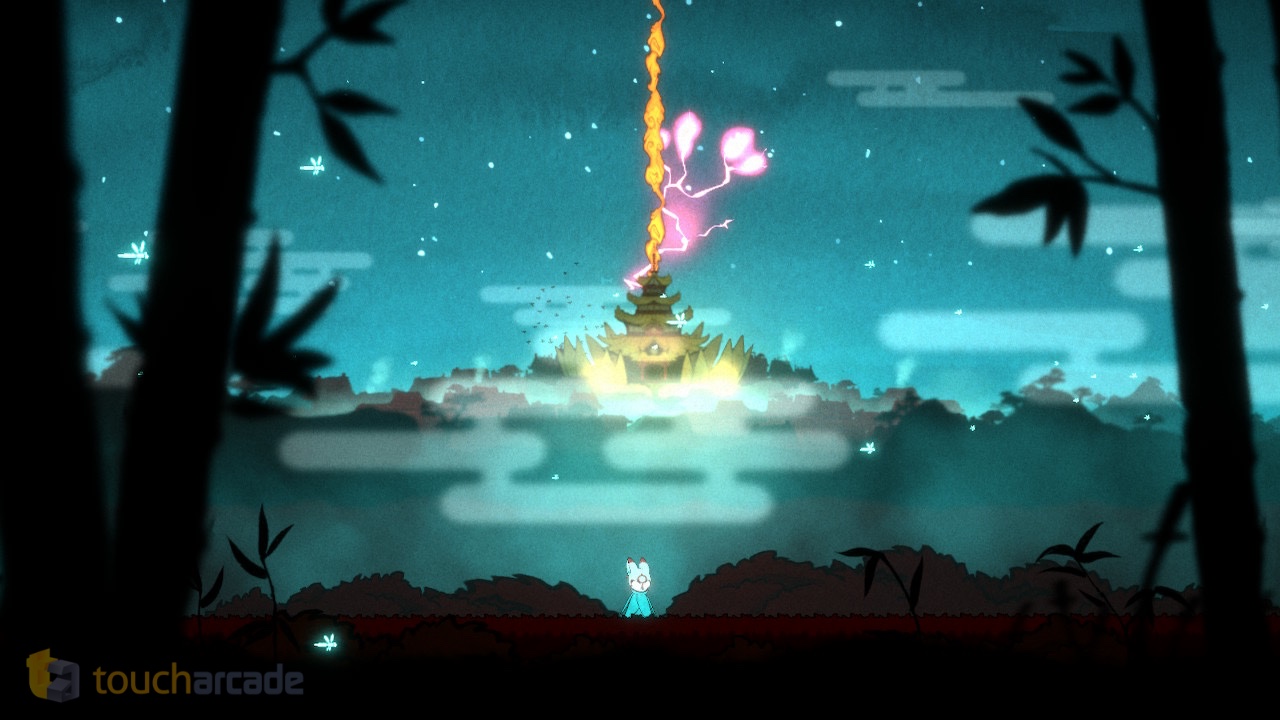
My only real complaint with Bo: Path of the Teal Lotus aside from the few performance issues on Switch, is in how the story didn’t hit as hard as the rest of the game. I was hoping for more given the amazing animation work, art, and music.
While it might sound like I’m down on Bo: Path of the Teal Lotus in one way, I ended up loving the game a lot. The aesthetic, music, and traversal all come together to be a fantastic Metroidvania. I usually end up enjoying Humble Games’ published titles, but I was surprised and delighted by Bo: Path of the Teal Lotus, and hope to buy the physical release soon. -Mikhail Madnani
SwitchArcade Score: 4.5/5
Select New Releases
The New Denpa Men (Free)

The Denpa Men make a return after seemingly disappearing with the Nintendo 3DS. This one is free to start, but it offers in-app purchases so be aware of that. Catch and collect Denpa Men, tackle various stages and battle monsters, and look for loot. I mean, it’s free to give it a go. You can try it yourself and see if it’s something you’re into and how egregious the monetization might be.
SNK vs. Capcom: SVC Chaos ($19.99)
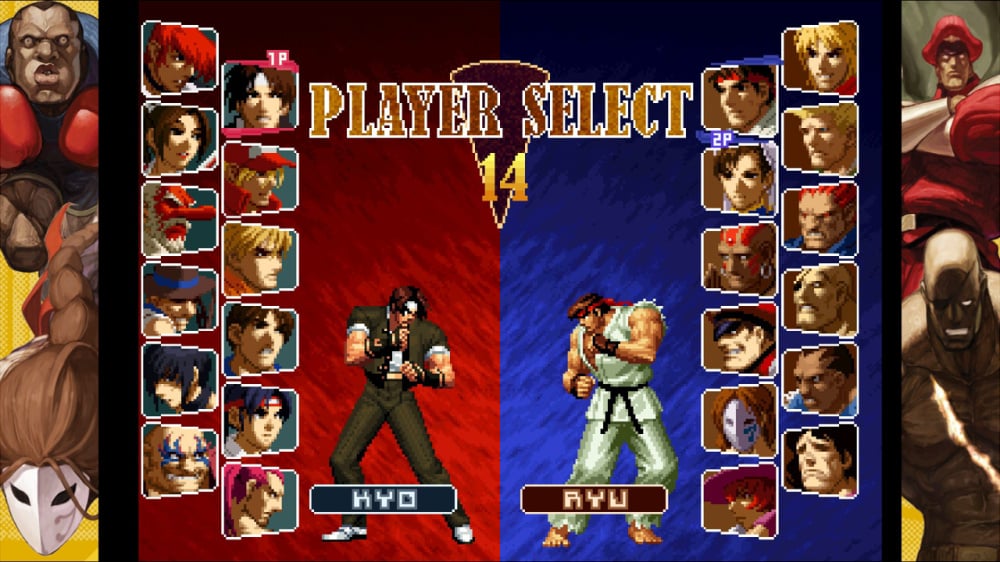
While this is arguably the worst game to come out of Capcom and SNK’s collaboration around the turn of the millennium, there’s still some fun to be had with this 2003 NEOGEO fighter. This port has been handled by the capable folks at Code Mystics, and features full rollback internet play, the ability to view hitboxes, and a nice gallery filled with art. I mean, even a middling SNK fighter is an SNK fighter, and if nothing else it’s interesting to see the Capcom characters rendered by SNK’s artists.
Sales
(North American eShop, US Prices)
Lots of Capcom sales today, perhaps prompted by the EVO event over the last weekend. There are a few other goodies in there, so have a careful look through. Not much in the outbox, but it’s a pretty small bunch so you might as well check that while you’re at it.
Select New Sales
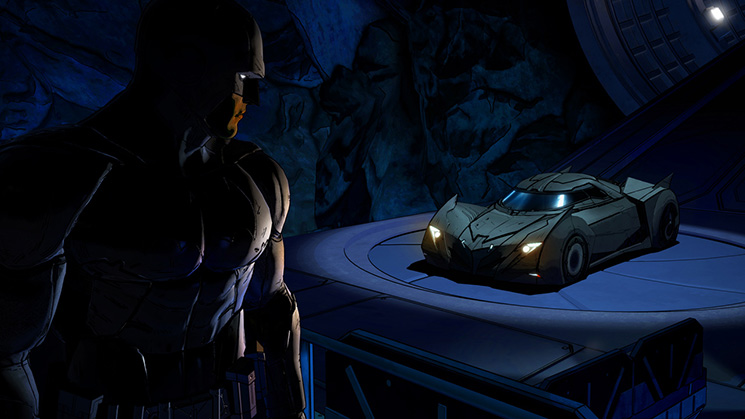
Batman: The Telltale Series ($7.49 from $14.99 until 7/28)
Warhammer 40k: Dakka Squadron ($1.99 from $19.99 until 7/29)
Knight Squad 2 ($8.24 from $14.99 until 7/29)
Capcom Arcade Stadium Bundle ($15.99 from $39.99 until 7/30)
Capcom Arcade 2nd Stadium Bundle ($15.99 from $39.99 until 7/30)
Capcom Beat ‘Em Up Bundle ($9.99 from $19.99 until 7/30)
Capcom Fighting Collection ($15.99 from $39.99 until 7/30)
Capcom Fighting Bundle ($19.99 from $59.99 until 7/30)
Street Fighter Anniversary Collection ($9.99 from $29.99 until 7/30)
Ultra Street Fighter II ($19.99 from $39.99 until 7/30)
Resident Evil 0 ($9.99 from $19.99 until 7/30)
Resident Evil ($9.99 from $19.99 until 7/30)
Resident Evil 4 ($9.99 from $19.99 until 7/30)
Resident Evil 5 ($9.99 from $19.99 until 7/30)
Resident Evil 6 ($9.99 from $19.99 until 7/30)
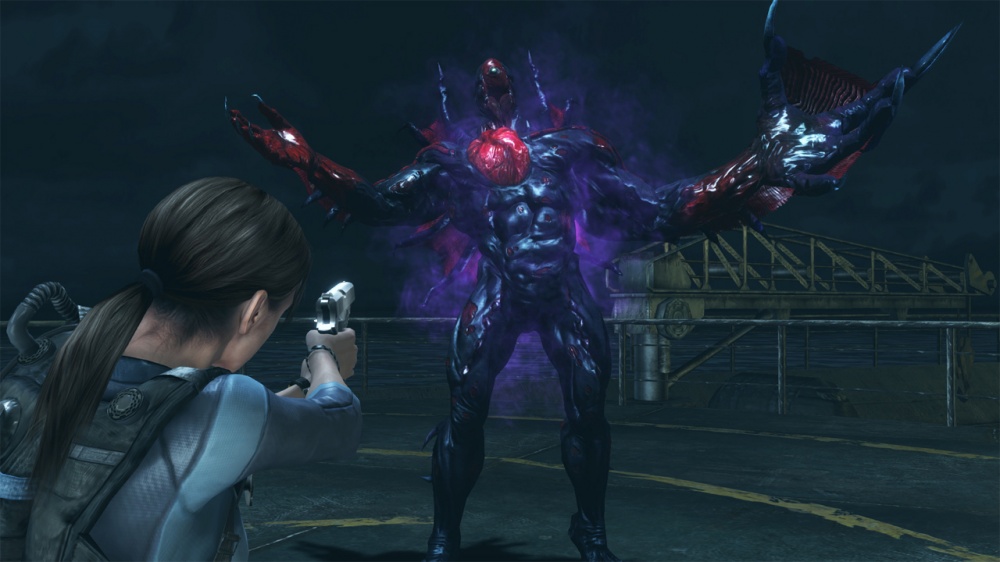
Resident Evil Revelations ($7.99 from $19.99 until 7/30)
Resident Evil Revelations 2 ($7.99 from $19.99 until 7/30)
Onimusha Warlords ($7.99 from $19.99 until 7/30)
Dragon’s Dogma Dark Arisen ($4.99 from $29.99 until 7/30)
Mega Man Legacy Collection ($7.99 from $14.99 until 7/30)
Mega Man Legacy Collection 2 ($7.99 from $19.99 until 7/30)
Mega Man X Legacy Collection ($7.99 from $19.99 until 7/30)
Mega Man X Legacy Collection 2 ($7.99 from $19.99 until 7/30)
Mega Man Zero/ZX Collection ($9.99 from $29.99 until 7/30)
Mega Man Battle Network Collection ($19.99 from $39.99 until 7/30)
Mega Man Battle Network Collection 2 ($19.99 from $39.99 until 7/30)
Mega Man 11 ($9.99 from $29.99 until 7/30)
Ghost Trick: Phantom Detective ($19.99 from $29.99 until 7/30)
Monster Hunter Generations Ult. ($9.99 from $39.99 until 7/30)
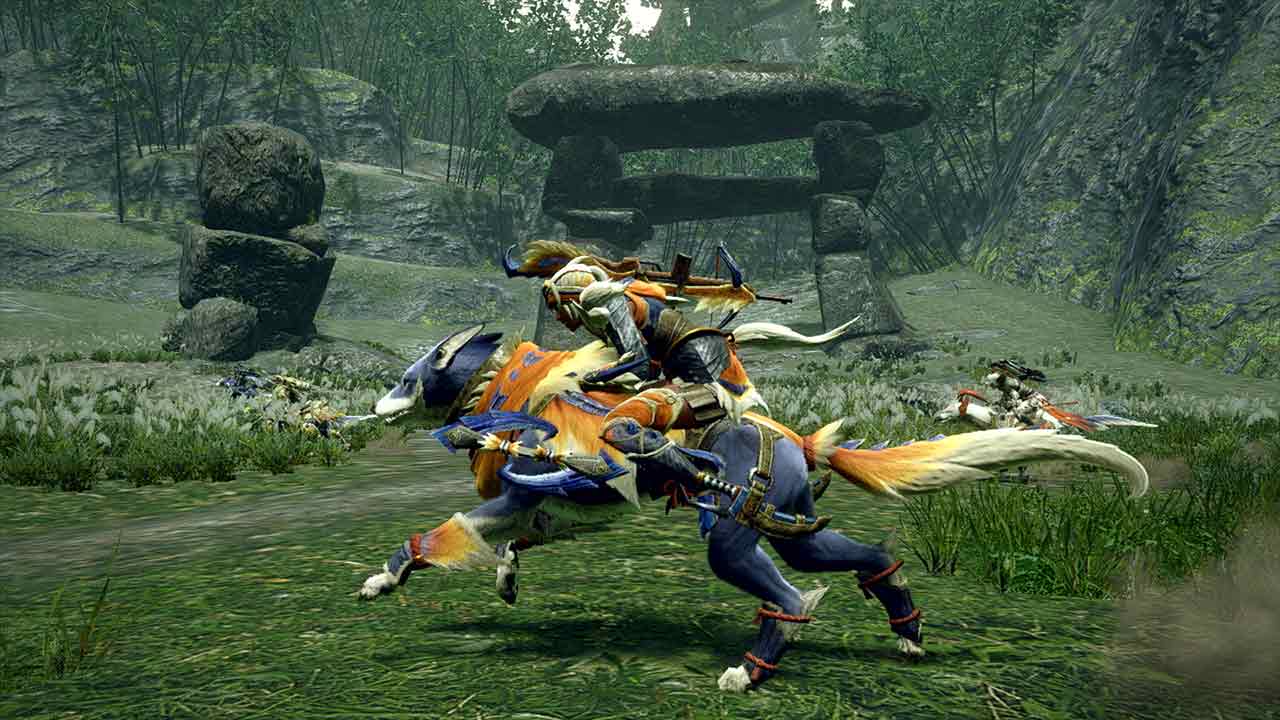
Monster Hunter Rise ($9.99 from $39.99 until 7/30)
Monster Hunter Rise Sunbreak DLC ($15.99 from $39.99 until 7/30)
Monster Hunter Rise + Sunbreak ($19.99 from $59.99 until 7/30)
Shinsekai Into the Depths ($9.99 from $19.99 until 7/30)
Ghosts n Goblins Resurrection ($9.99 from $29.99 until 7/30)
Just Shapes & Beats ($12.99 from $19.99 until 8/2)
Another Crab’s Treasure ($23.99 from $29.99 until 8/2)
Fragment’s Note+ ($5.99 from $14.99 until 8/3)
Fragment’s Note2+ ($7.99 from $19.99 until 8/3)
Fragment’s Note+ AfterStory ($4.39 from 10.99 until 8/3)
Sydney Hunter & the Curse of the Mayan ($4.99 from $9.99 until 8/4)
Totally Accurate Battle Simulator ($9.99 from $19.99 until 8/5)
Whateverland ($3.74 from $14.99 until 8/6)
Euphoria ($2.24 from $14.99 until 8/8)
Frogurai ($3.99 from $4.99 until 8/9)
Beyond a Steel Sky ($9.99 from $39.99 until 8/9)
Murder on the Orient Express ($19.99 from $39.99 until 8/9)
Garden Life: A Cozy Simulator ($19.99 from $39.99 until 8/9)
Sales Ending Tomorrow, July 22nd
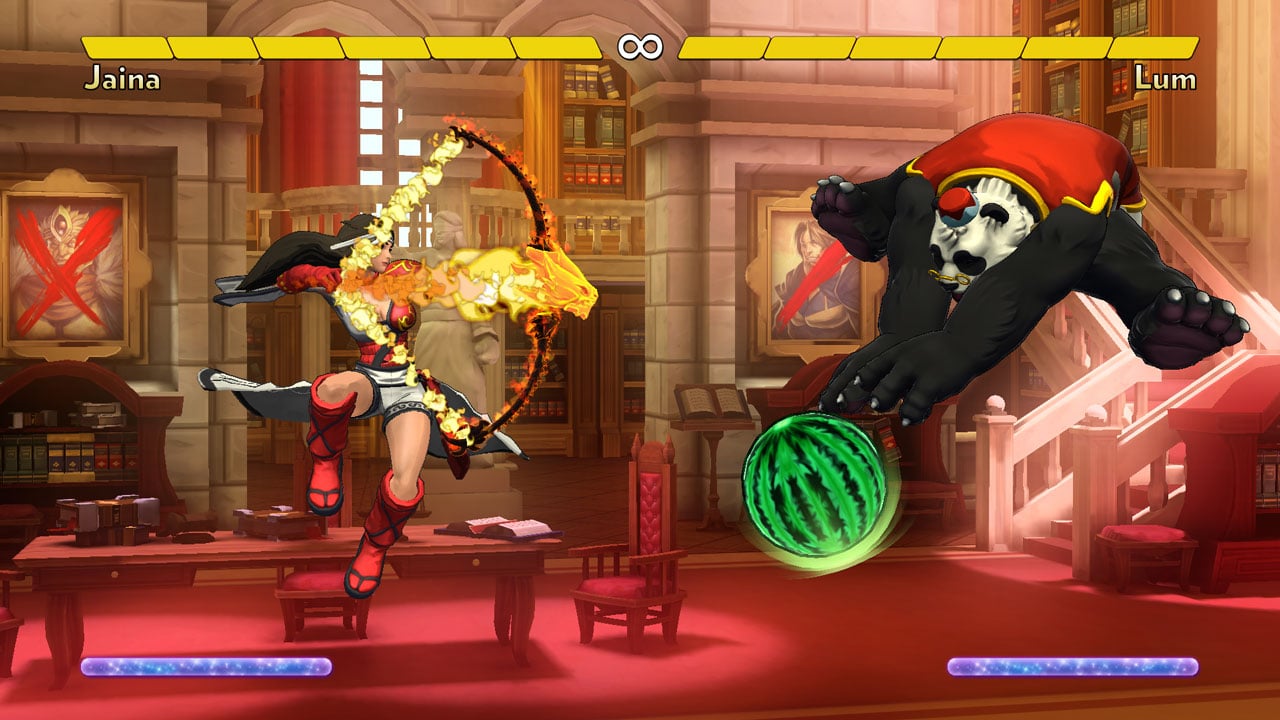
Fantasy Strike Collector’s Pack ($29.99 from $99.99 until 7/23)
Fantasy Strike Core Pack ($5.99 from $19.99 until 7/23)
Formula Retro Racing World Tour ($9.99 from $19.99 until 7/23)
Kao the Kangaroo Anniversary Edition ($14.79 from $36.99 until 7/23)
Kao the Kangaroo Well Good Bundle ($9.89 from $32.99 until 7/23)
Stolen Realm ($11.99 from $19.99 until 7/23)
Trine Enchanted Edition ($3.44 from $14.99 until 7/23)
WildTrax Racing ($1.99 from $7.99 until 7/23)
That’s all for today, friends. We’ll be back tomorrow with more new games, more reviews, more sales, and perhaps some news. Phew, I definitely overdid things today. Now I’m in a bit of a bind time-wise, so I’d better move along. I hope you all have a magnificent Monday, and as always, thanks for reading!






/origin-imgresizer.eurosport.com/2024/01/18/3866460-78562128-2560-1440.jpg?w=150&resize=150,150&ssl=1)







